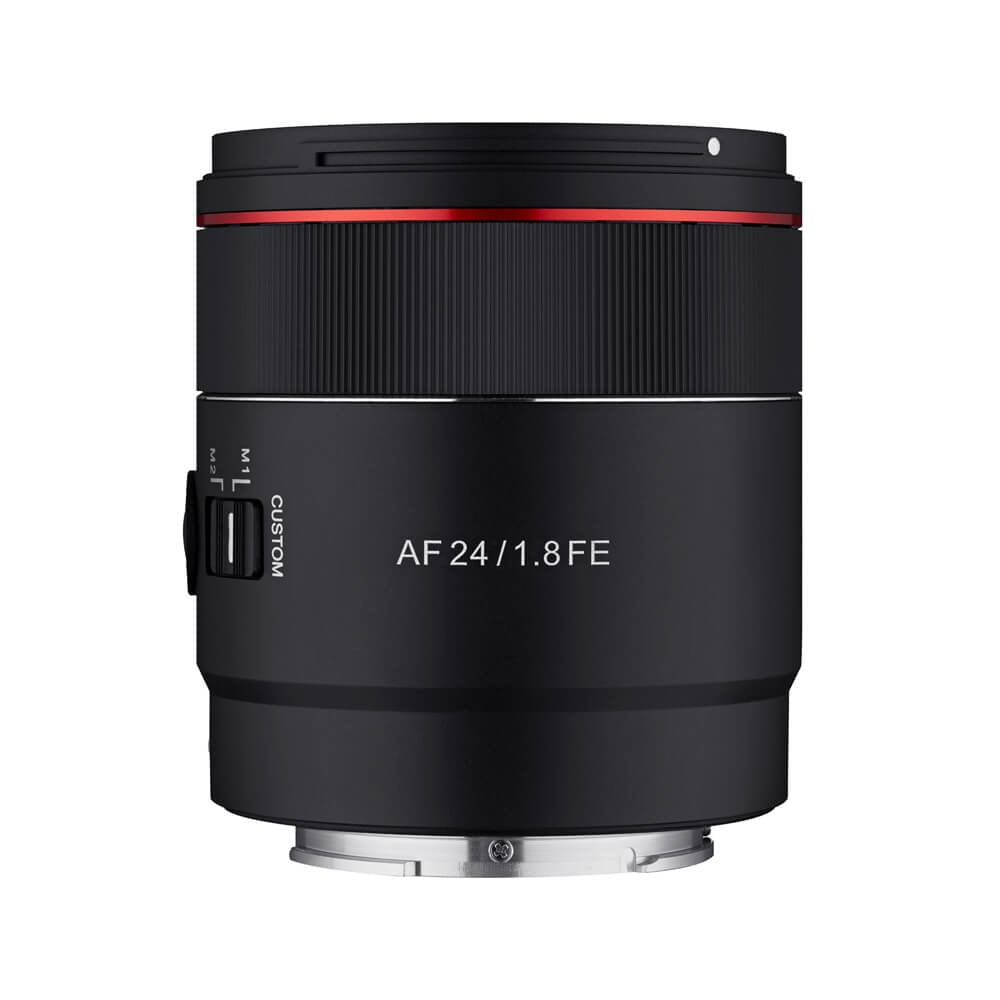Product Description
Samyang AF 24mm F1.8 Lens - Sony FE
- Bright and fast autofocus lens for Sony E full frame mirrorless cameras
- New Custom Mode switch with Focus Hold button and LED indicator
- Linear STM motor delivers fast, quiet and accurate focusing, with a close focus distance of just 19cm
- UMC technology reduces flare and ghosting as much as possible for clearer brighter images
- Advanced weather-sealing protects internal components from harsh environments

Samyang's AF 24mm F1.8 FE lens is a compact autofocus wide-angle lens, optimised and ideally matched to Sony Full Frame and APS-C E-Mount Mirrorless cameras.

It offers the perfect solution for Landscape, Indoor and Astrophotography, with super-fast F/1.8 maximum aperture and 83.7° angle of view. Even wide-open at its F/1.8 maximum aperture, the AF 24mm F1.8 FE delivers superb image quality from centre to edge, during daytime or at night.

Unique features include an AF/MF Custom switch and a focus lock button, with an LED infinity focus indicator. The new elegant design is compact and lightweight, measuring 65mm diameter, 71.5mm long and weighing in at just 230g.

The linear stepping-motor delivers fast, quiet and accurate autofocus, with a close focus distance of just 19cm. There is a 58mm front thread for convenient use of filters and advanced weather sealing allows shooting to continue in less than ideal weather conditions.




















